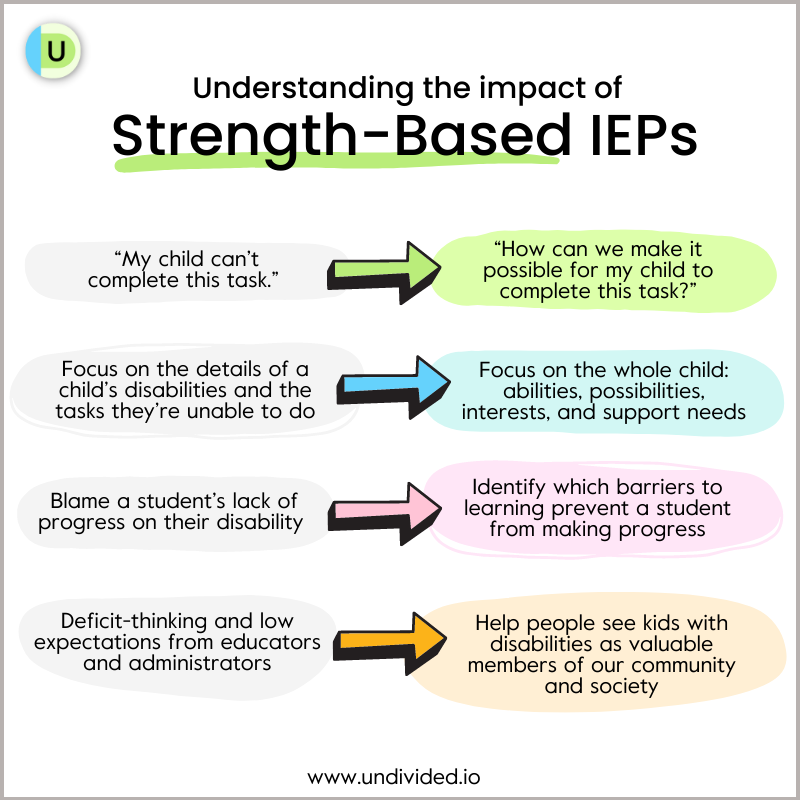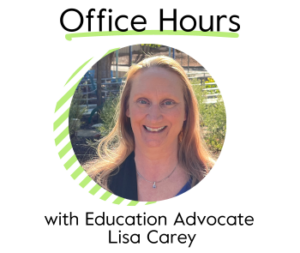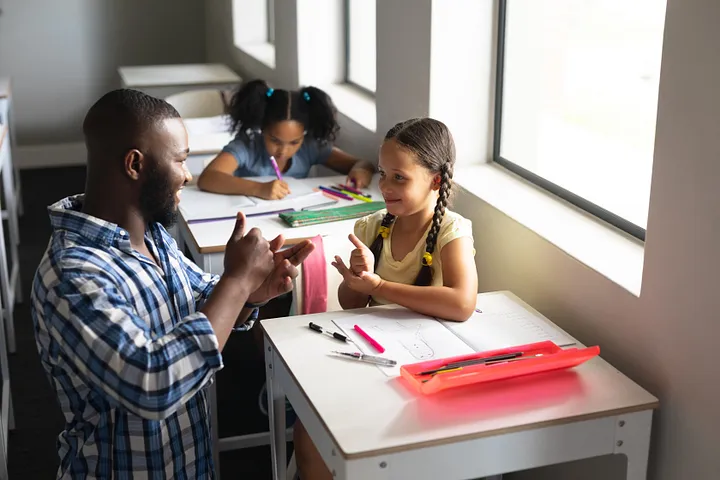With IEP season in full swing, we’re setting our sights on strength-based IEPs and how to develop one using a whole-child, strengths-first approach. But what exactly is a strength-based IEP? Is it just another buzzword or do kids actually need one? (Yes, they do!) If you’ve sat through an IEP meeting before, or read through pages and pages of an IEP assessment, you might be familiar with traditional IEP language which tends to focus on limitations and deficits.
That’s where strength-based IEPs come into play — they address how you and your school team can work with your child’s strengths to foster greater self-determination, independence, and academic skills rather than focusing on deficits, or how to “overcome” a disability that’s innately part of who they are. This doesn’t mean we gloss over our kids’ challenges — it means that instead of blaming lack of progress on their disability, we identify which barriers to learning may prevent them from making further progress.
“Creating strength-based IEPs will help people see your children as individuals who make up an important part of our community and society.” — Dr. Caitlin Solone
This week, we’re focusing on how changing our mindset and language from “My child can’t complete this task” to “How can we make it possible for my child to complete this task?” can help our kids thrive in school.

Using a strengths-based approach means writing IEPs in a way that honors a student’s abilities, possibilities, interests, and support needs (not just percentages, numbers, and data from school records). This includes turning strengths into IEP goals, incorporating inclusive language, using strength-based accommodations, and minimizing barriers to progress. Find out how to develop one, and more, in our article How to Develop a Strength-Based IEP.

“A vision statement is what we want out of life for our child and what our child wants out of life,” says Dr. Caitlin Solone, education advocate, teacher educator, and faculty at UCLA — and it’s a vital part of a strengths-based IEP. But did you know that vision statements are not automatically included in IEPs? Read our article Creating a Vision Statement for Your Child to find out more about what a vision statement is and how to advocate for and create one for your child. Use our free, printable vision statement template to get started!
For parents who want a deeper dive into strength-based IEPS, watch our full event replay with Dr. Solone! She answers all our questions on specific resources that can help us develop strength-based IEPs with our teams, including why vision statements can be transformative tools, why strength-based IEPs are more important than ever, and how to navigate the least-restrictive environment.

One Undivided member shares with us, “Having [my Navigator] at the IEP made them more open to the things I was saying. It’s never gone so well!”

- What is a vision statement, and why is it so important to the IEP process? Check out Dr. Solone’s explanation on YouTube→
- Recognizing our kids’ strengths is a huge part of advocating for them. Our private Facebook group is filled with fellow parents who “get it.” Join us if you haven’t already→
- Get daily tips, expert advice, and helpful insights from fellow parents in your feed! Follow @undividedapp on Instagram→
- Help us share our mission to make sure kids have all the support they need to thrive. Connect with us on LinkedIn→
- Get step-by-step guides for all things IEP in the Undivided app, backed by 1:1 Navigator support and Office Hours with our special education expert. Start here→

Office Hours with Lisa Carey
On Wednesday, February 21, 12:00–1:00 p.m. PST, Education Advocate Lisa Carey will be available to answer questions about IEPs and special education. Stop by for five minutes or the whole hour to get expert answers and connect with other parents. Bi-weekly Office Hours are virtual Q&A sessions with experts that are open to Undivided members only, so if you’d like to attend, sign up here to begin your free Kickstart!

This newsletter was originally sent to our subscribers on 2/15/24. Subscribe to our newsletter to get more resources like this in your inbox, and check out our full library of articles, templates, and videos at undivided.io/resources.



























